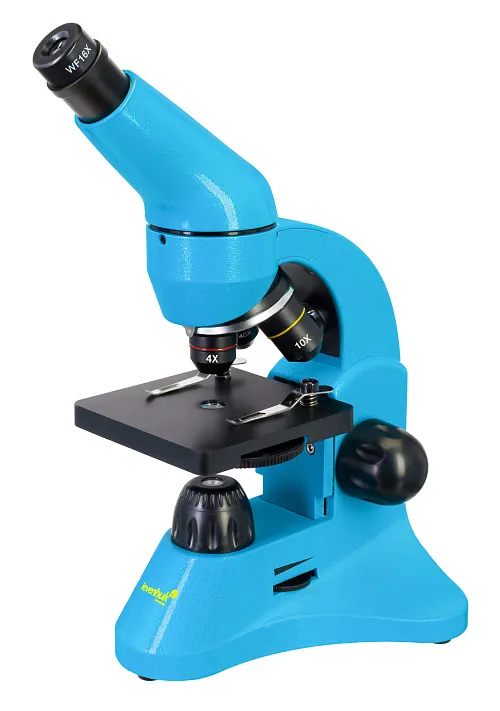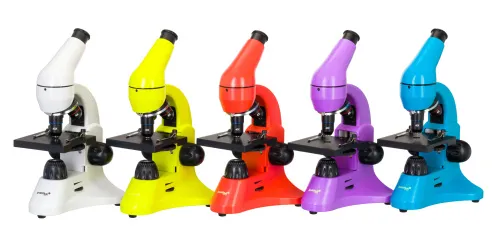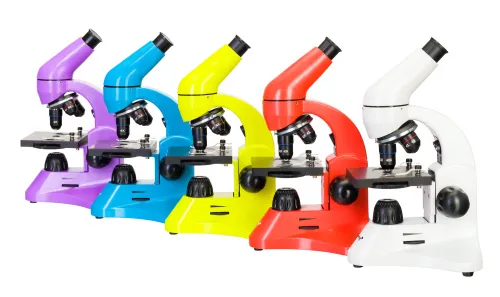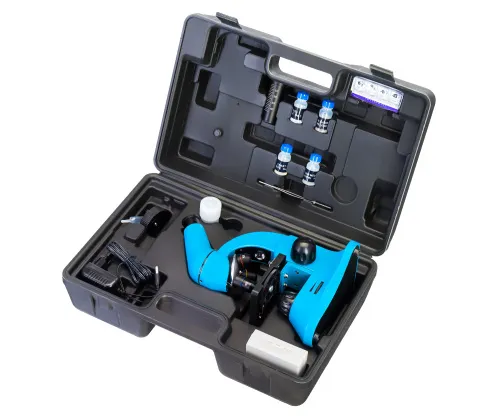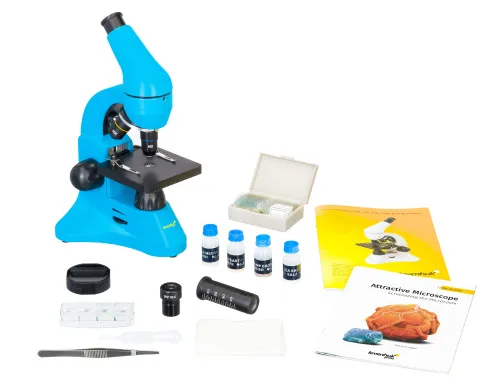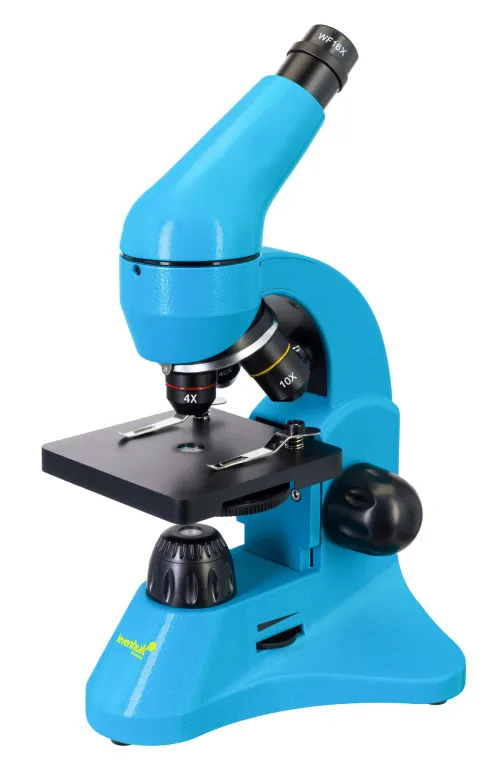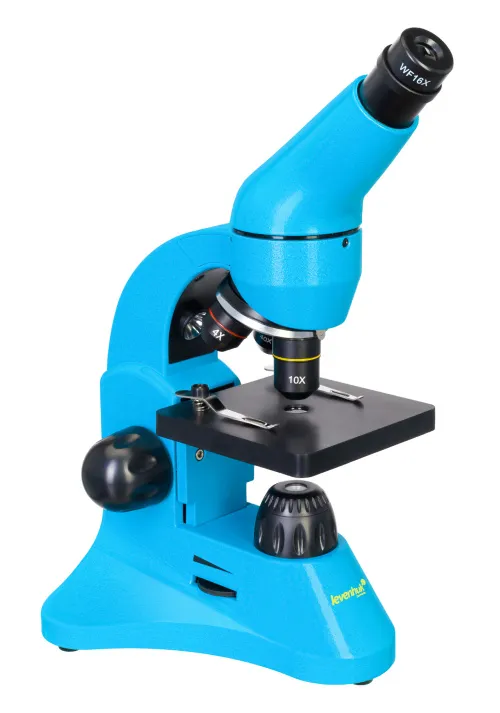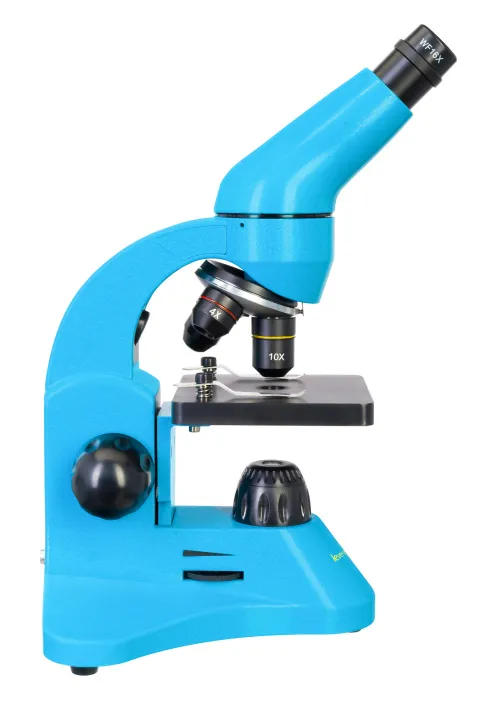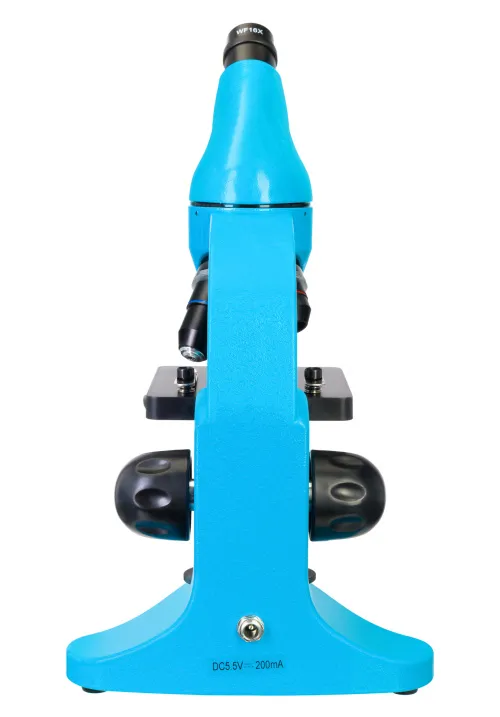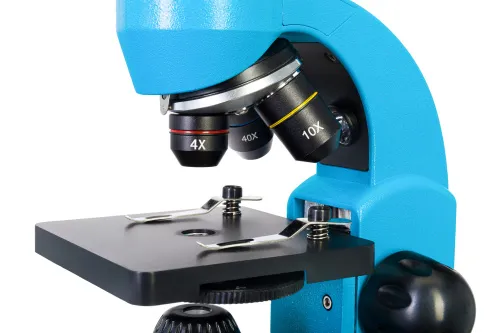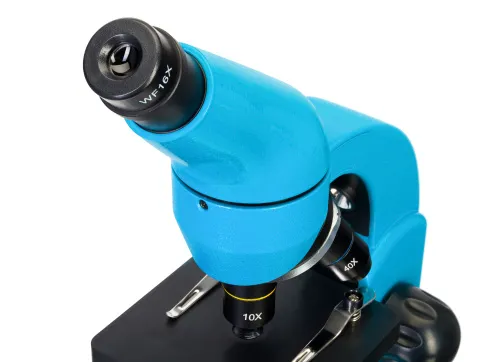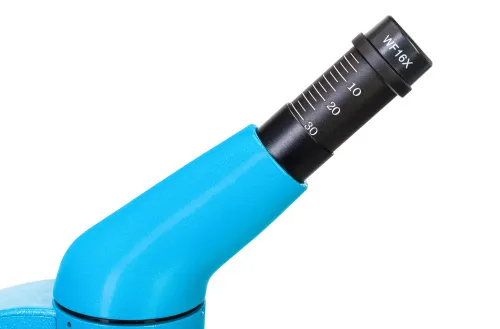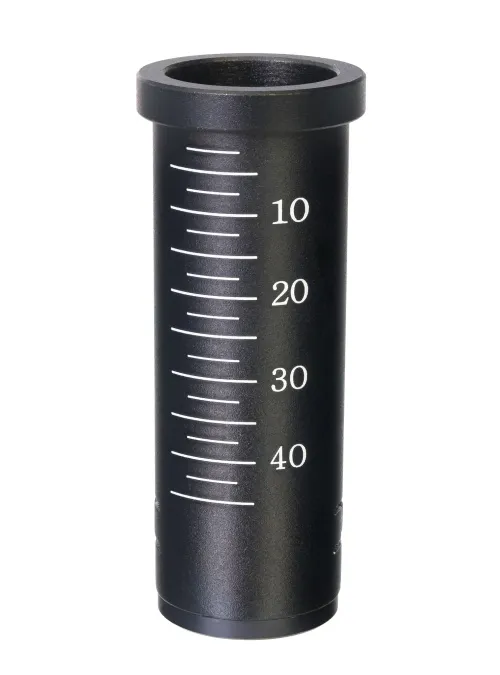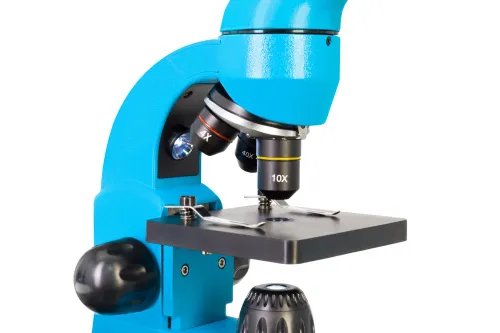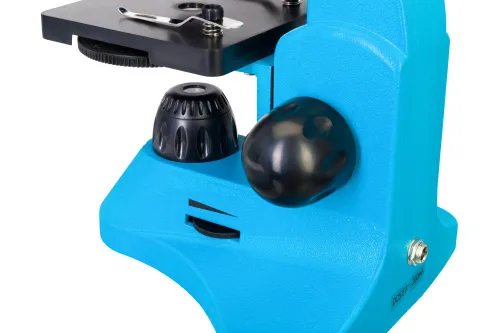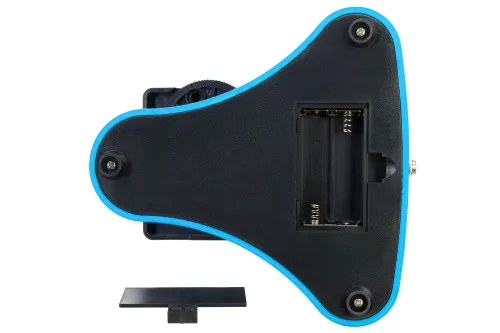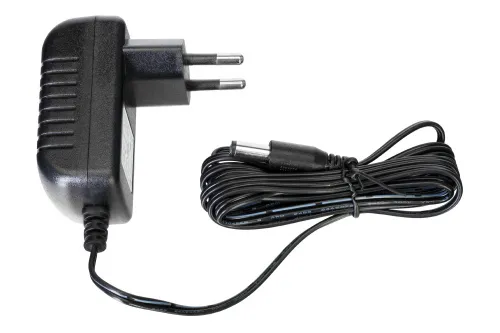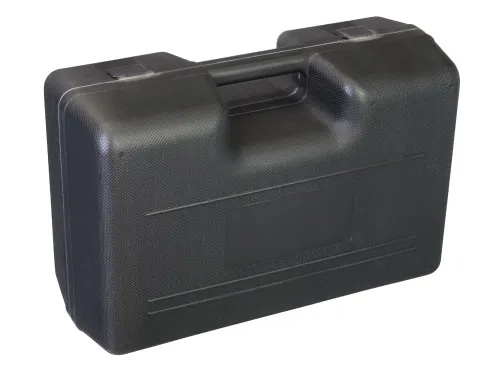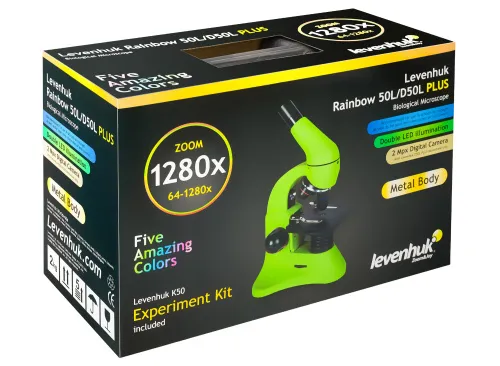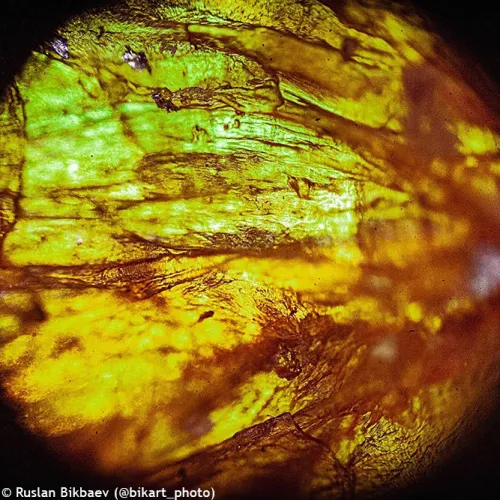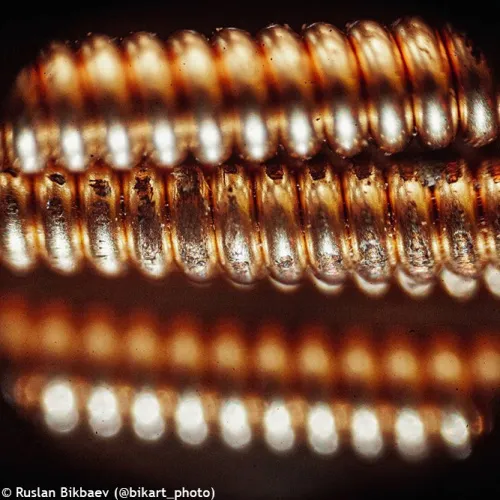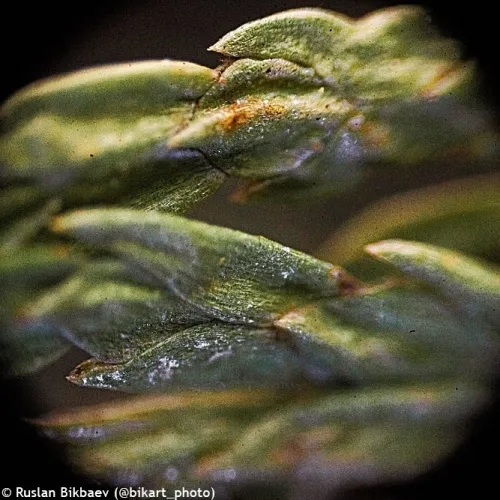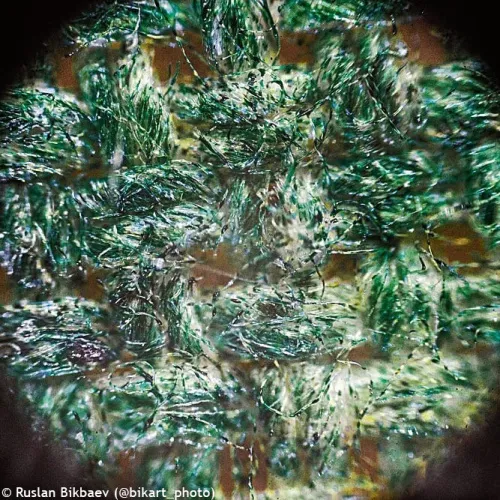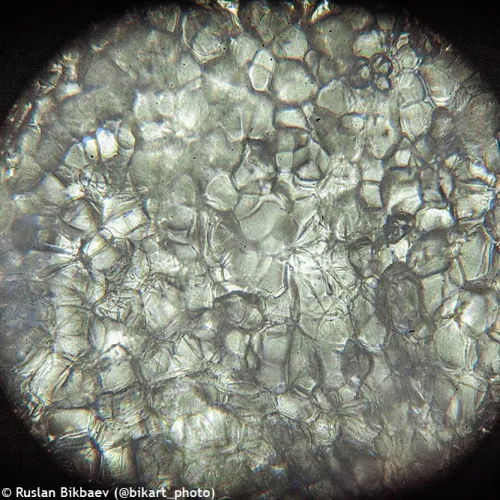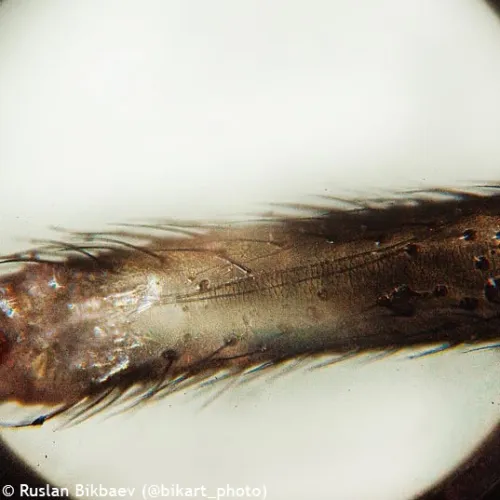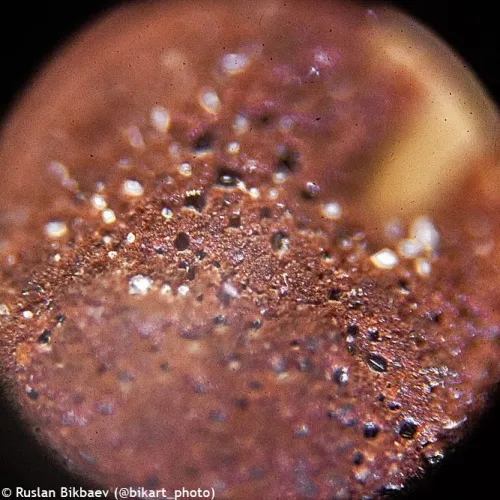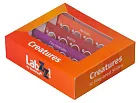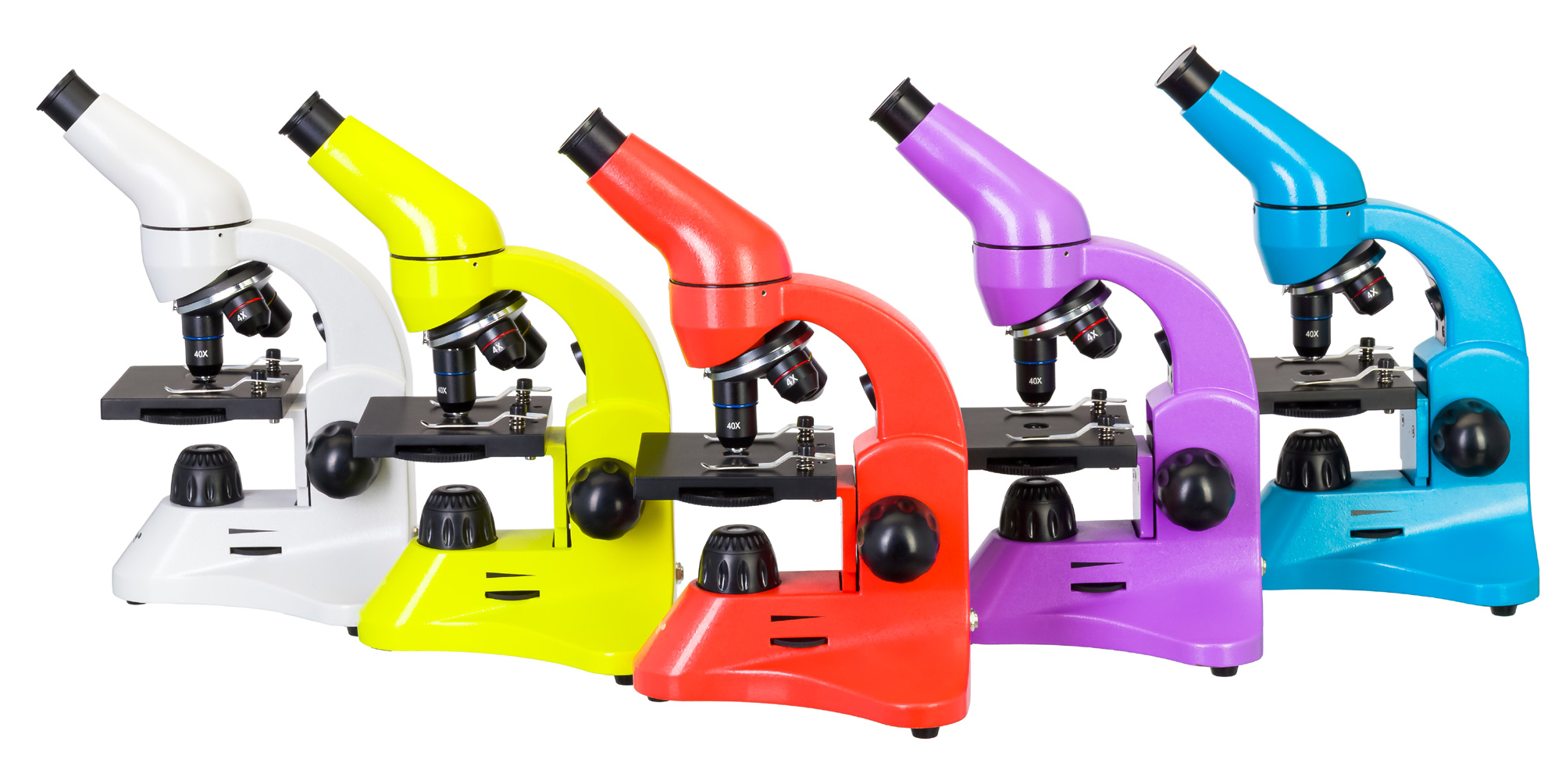Levenhuk Rainbow 50L PLUS Microscope
Stylish, colorful, modern microscope for amateur biologists. Experiment kit included. Magnification: 64–1280x
| Product ID | 69078 |
| Brand | Levenhuk, Inc., USA |
| Warranty | lifetime |
| EAN | 5905555007212 |
| Package size (LxWxH) | 18x40x27 cm |
| Shipping Weight | 3.24 kg |
Levenhuk Rainbow 50L PLUS Microscope would make a wonderful gift for an inquisitive teenager, biology student, or a laboratory technician. The maximum magnification power of this instrument is 1280x – just enough to see all the tiniest details of observed microscope samples. The model features a reliable, robust body – Rainbow 50L PLUS Microscope can be used as an instrument at home, as well as for laboratory work in schools and universities.
Quality optics
Three objectives allow you to obtain 64x, 160x, and 640x magnification. 40xs objective lens has a special spring-loaded mechanism. While focusing, you may accidently touch the observed sample with the objective lens. But the spring-loaded lens will retract a little, preventing any possible damage. The kit also includes 2x Barlow lens, which doubles the magnification of any given objective lens. The basic kit allows you to achieve 1280x magnification power!
The lenses are made of high-quality optical glass coated with special anti-reflective coating. The produced images will always be sharp, contrast, and crystal-clear.
Universal LED illumination system
The microscope is equipped with two bright LED illumination sources. To observe transparent samples such as thin plant cuts or tiny crustaceans, use lower illumination. Upper illumination is used for opaque objects – paper fiber, coins, and many other interesting things. Semi-transparent objects are better seen when you use both upper and lower illumination. The adjustable brightness allows you to choose the optimal amount of light for each sample.
Ergonomic body
The microscope is distinguished by its modern ergonomic design. The reliable metal body of the microscope ensures its long service life. The 45-degrees inclined monocular head allows for the most convenient observing position and prevents fatigue, even after long hours of work. Moreover, the head rotates 360 degrees around its axis, which is really convenient for group work.
Illumination can be powered by AC power, as well as by batteries in case you want to do your research outside.
Caution: Please refer to the specifications table for the correct mains voltage and never attempt to plug a 110V device into 220V outlet and vice versa without using a converter. Remember that mains voltage in the U.S. and Canada is 110V and 220–240V in most European countries.
Conducting microscope experiments
The microscope is great for experienced users as well as for complete beginners. Levenhuk K50 Experiment kit will help them make their first experiments and learn a whole bunch of new things about the microworld.
Reliable and convenient case
Robust plastic case provides safe transportation of the microscope and all the accessories included in the package.
Features:
- Biological microscope with 64–1280x magnification
- 2x Barlow lens included
- Available in five bright colors
- Sturdy and durable body made of metal
- Upper and lower LED illumination systems
- Experiment kit included
- Comes with a handy plastic case
The kit includes:
- Microscope
- Objectives: 4x, 10x and 40xs
- Eyepiece: WF16x
- 2x Barlow lens
- Stage with clips
- Diaphragm disk
- Condenser
- Built-in upper and lower LED illuminations
- AC adapter
- Plastic case
- Levenhuk K50 Experiment Kit
- User manual and lifetime warranty
Levenhuk K50 Experiment Kit includes:
- "Attractive Microscope. Scrutinizing the Microcosm" User Guide
- Forceps
- Hatchery for Artemia (brine shrimp, or sea-monkeys)
- Microtome
- Flask with yeast
- Flask with pitch
- Flask with sea salt
- Flask with brine shrimp
- 5 ready-to-use specimens
- 5 blank slides
- Dropper
- Dust cover
Some things you can see under a microscope:





Levenhuk Rainbow 50L PLUS Microscope is compatible with Levenhuk digital cameras (purchased separately). Levenhuk cameras are installed in the eyepiece tube instead of an eyepiece.
Levenhuk Rainbow Microscopes Comparison Table
| Levenhuk Rainbow 2L | Levenhuk Rainbow 2L PLUS | Levenhuk Rainbow 50L | Levenhuk Rainbow 50L PLUS | |
|---|---|---|---|---|
| Type | biological | biological | biological | biological |
| Head | monocular, inclined 45° | monocular, rotatable 360°, inclined 45° | monocular, rotatable 360°, inclined 45° | monocular, rotatable 360°, inclined 45° |
| Body material | plastic | metal | plastic | metal |
| Magnification, x | 40–400 | 64–640 | 40–800 | 64–1280 |
| Optics material | optical glass | optical glass | optical glass | optical glass |
| Eyepieces | WF10x | WF16x | WF10x | WF16x |
| Objectives | 4х, 10х, 40х | 4х, 10х, 40хs | 4х, 10х, 40хs | 4х, 10х, 40хs |
| Barlow lens | no | no | 2x | 2x |
| Revolving nosepiece | 3 objectives | 3 objectives | 3 objectives | 3 objectives |
| Eyepiece tube diameter, mm | 23.2 | 23.2 | 23.2 | 23.2 |
| Stage, mm | 90x90, with clips | 90x90, with clips | 90x90, with clips | 90x90, with clips |
| Stage moving range, using focusing mechanism, mm | 0–15, vertical | 0–8, vertical | 0–11, vertical | 0–11, vertical |
| Focus | coarse | coarse | coarse | coarse |
| Condenser | NA 0.65, diaphragm disk (6 apertures) | NA 0.65, diaphragm disk (6 apertures) | NA 0.65, diaphragm disk (6 apertures) | NA 0.65, diaphragm disk (6 apertures) |
| Illumination | upper and lower LED illumination with adjustable brightness | upper and lower LED illumination with adjustable brightness | upper and lower LED illumination with adjustable brightness | upper and lower LED illumination with adjustable brightness |
| Power supply | AC adapter or 3 AA batteries | AC adapter or 3 AA batteries | AC adapter or 2 AA batteries | AC adapter or 2 AA batteries |
| Case | no | no | plastic | plastic |
| Levenhuk K50 Experiment Kit* | yes | yes | yes | yes |
* Please note that Levenhuk K50 Experiment Kit is supplied without individual packaging.
| Product ID | 69078 |
| Brand | Levenhuk, Inc., USA |
| Warranty | lifetime |
| EAN | 5905555007212 |
| Package size (LxWxH) | 18x40x27 cm |
| Shipping Weight | 3.24 kg |
| Type | biological, light/optical |
| Microscope head type | monocular |
| Optics material | optical glass |
| Head | 360 ° rotatable |
| Head inclination angle | 45 ° |
| Magnification, x | 64 — 1280 |
| Eyepiece tube diameter, mm | 23.2 |
| Eyepieces | WF16x |
| Objectives | achromatic: 4x, 10x, 40xs (spring) |
| Revolving nosepiece | for 3 objectives |
| Stage, mm | 90x90 |
| Stage moving range, mm | 0–11, vertical |
| Stage features | with clips |
| Condenser | N.A. 0.65 |
| Diaphragm | diaphragm disc (6 apertures) |
| Focus | coarse |
| Body | metal |
| Illumination | LED |
| Brightness adjustment | ✓ |
| Power supply | 2 AA batteries (not included), 220V/50Hz |
| Power supply: batteries/built-in battery | yes |
| Light source type | 3–3.2V (lower and upper illuminators) |
| User level | beginners |
| Assembly and installation difficulty level | easy |
| Application | school/educational |
| Illumination location | dual |
| Research method | bright field |
| Experiment kit included | ✓ |
| Barlow lens | 2x |
| Pouch/case/bag in set | case, dust cover |
and downloads
Levenhuk video guide on choosing the best microscope for kids and schoolchildren
Video review of the stylish Levenhuk Rainbow 50L PLUS Microscopes
Video review of the microscope by Amazon user TorridlyBoredShopper
We have gathered answers to the most frequently asked questions to help you sort things out
Find out why studying eyes under a microscope is entertaining; how insects’ and arachnids’ eyes differ and what the best way is to observe such an interesting specimen
Quick overview of some good microscopes for children
Read this review to learn how to observe human hair, what different hair looks like under a microscope and what magnification is required for observations
Learn what a numerical aperture is and how to choose a suitable objective lens for your microscope here
A detailed review of the Levenhuk Rainbow 50L PLUS model and Invisible World book posted at dedicated educational resource Educents.com
Learn what a spider looks like under microscope, when the best time is to take photos of it, how to study it properly at magnification and more interesting facts about observing insects and arachnids
This review for beginner explorers of the micro world introduces you to the optical, illuminating and mechanical parts of a microscope and their functions
Short article about Paramecium caudatum - a microorganism that is interesting to observe through any microscope
A detailed review of the microscope from Amazon customer
Learn more about this great entry-level microscope from Amazon customer video review
Objectives: 4x, 10x and 40xs;
Eyepiece: WF16x;
2x Barlow lens;
Stage with clips;
Diaphragm disk;
Condenser;
Built-in upper and lower LED illuminations;
AC adapter;
2 AA batteries;
Plastic case;
Levenhuk K50 Experiment Kit;
User manual and lifetime warranty
https://www.levenhuk.com/catalogue/microscopes/levenhuk-rainbow-50l-plus-microscope/
Is there any additional information you might need?

